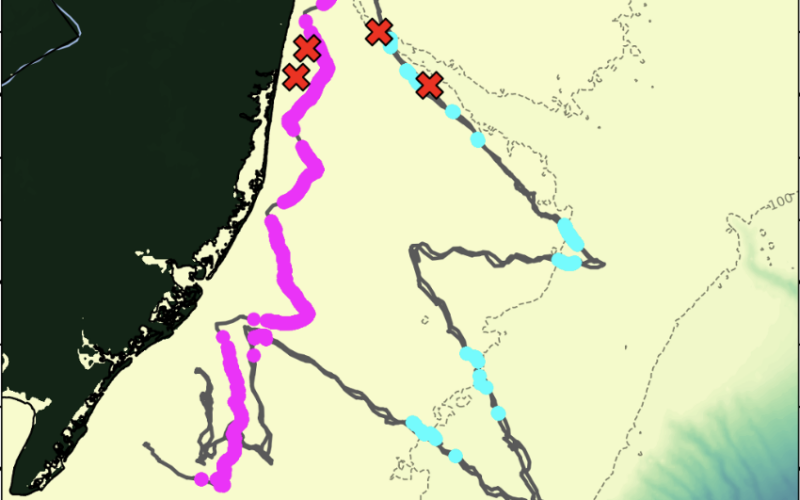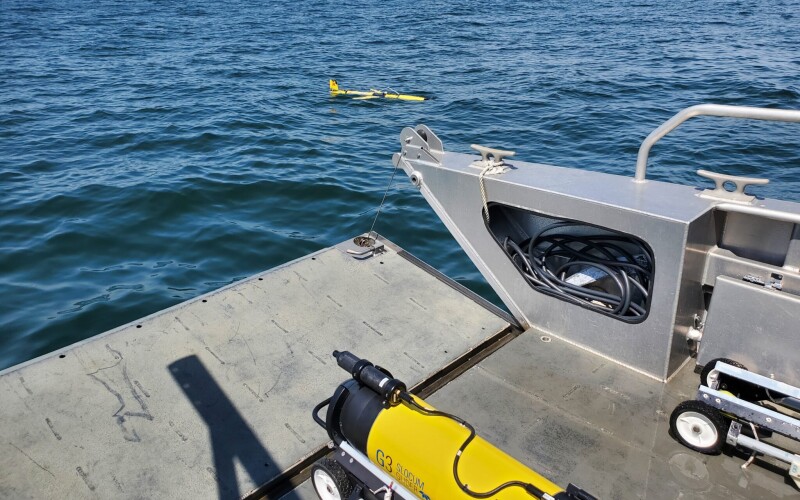Unusually low oxygen and pH levels were measured in the ocean off New Jersey, as dead fish, lobsters and crabs were reported in the same area in summer 2023, according to a report by Rutgers University researchers.
Lower dissolved oxygen levels alone are not uncommon in the summer months, part of the seasonal stratification of warmer and cooler waters off the Mid-Atlantic. But 2023 was notable for both lower than usual oxygen, and a drop in pH – the measure of relative acidity in the water.
A team headed by associate professor Grace Saba and professor Josh Kohut at the Rutgers Center for Ocean Observing Leadership (RUCOOL) used two of the university’s Slocum electric gliders – autonomous undersea robots – to track water quality in August and September 2023.
Much of the bottom water sampled from Sandy Hook near lower New York Harbor south to Tuckerton, N.J., at depths from 50 feet to 200 feet, showed dissolved oxygen concentrations less than 5 parts per million and pH values less than 7.75.
“Coast-wide, hypoxic levels of dissolved oxygen (less than 3 ppm) were observed at shallower, more inshore locations,” Saba and Kohut reported. Normally, optimal seawater levels include dissolved oxygen over 7 ppm and pH 8.1, they wrote.

Dissolved oxygen levels below 5 ppm are a problem for marine life. Concentrations between 3 ppm and 5 ppm may not directly kill fish, but “research focused on New Jersey species has identified other negative impacts such as reduced metabolism, feeding, growth, and reproduction at these levels,” the Rutgers team noted. Extreme low oxygen below 3 ppm has been seen with fish kills, notably a 1976 event off New Jersey that covered 4,600 square miles.
During August-September 2023 “when low dissolved oxygen and pH were observed, numerous mortalities of fish, lobsters and crabs within the sampling area were reported,” affecting “lobsters, Jonah crab, Atlantic rock crab, spider crabs, black sea bass, and tautog…not only in pots where trapped organisms would not have been able to escape poor conditions, but also on the open bottom,” the Rutgers team reported. That suggests the conditions were widespread enough that fish over a large area could not swim away in time, they wrote.
The intersection of lower oxygen and pH and fish mortality showed that poor conditions in 2023 “could have been more pronounced than in previous years,” the report says.
“Faculty, students and staff at Rutgers are continuing to analyze the data collected to identify the specific causes of this summer’s low dissolved oxygen and pH event. Historical analysis of summer-time dynamics related to low bottom water dissolved oxygen are also underway. Events such as these that may prevent the ability to sustain normal populations of marine organisms are concerning, not only for the ocean ecosystem but also for the local economy and commercial and recreational fishing industries.”







